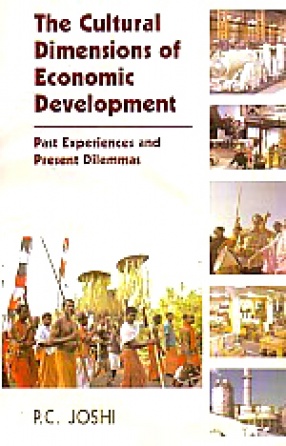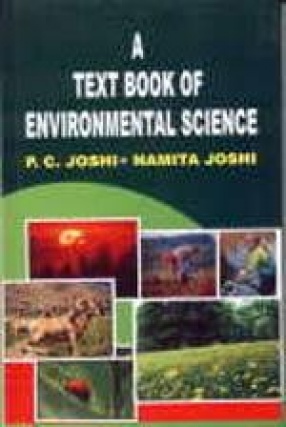
P C Joshi

Showing all 21 books
















The volumes deal with issues pertaining to medicine, health and culture. An outcome of the first National Conference of the Society for Indian Medical Anthropology held in Mysore in 2007, the volume has papers by eminent medical anthropologists from India and abroad that take the illness and disease dimension of health and culture. They take up medical pluralism and health-seeking behaviour, ethno-medicine and traditional treatments, healthcare drives and the ...

PC Joshi presents his monograph on the dynamism of cultural revolution in the economic development of a nation. The idea of cultural dimension for economic development is said to be common to all institutional frameworks or paths adopted for effecting transition by different countries in the past. The more backward a country the greater its economic lag the greater the importance of cultural dimension in economic development. Joshi analyses the cultural ...





Communication and National Development brings together fourteen essays by Professor P.C. Joshi, a leading social scientist and development thinker who explores here the interface between communication and development with special reference to India. The essays in the volume have a social science approach to communication as their unifying frame of reference. The long introduction and the epilogue try to present an integrated view of the main ideas, insights and ...

Marxism and Social Revolution in India and Other Essays is a collection of papers written by the author on different occasions during the last two decades and a half. They have, however, a unifying theme connecting them with each other and having relevance for the present. The aim of these is to promote a serious dialogue among the scholars of different disciplines and among the scholars and social activists on the theme of Marxism and Social Revolution in India. ...

The concept, knowledge and mass awareness about our biological diversity is one of the most talked about subject of 21 century. Obviously because human survival is directly linked to its ambient biological diversity of kaleidoscopic nature. As a result imparting knowledge to our future generation, on this subject has become most essential for the sake of posterity. However, the subject is vast like an ocean, embracing vast array of floral and faunal diversity ...

Tribes in India, who constitute 15 per cent of the geographical area and nearly 8 per cent of the population, are truly disadvantaged and marginalized population of our country. Heath status of the tribal population is marked by all the negative features that one may find in morbidity and mortality. Poverty, illiteracy, malnutrition, lack of personal hygiene, unsanitary conditions and absence of health education, poor mother and child health services and poor ...

People who have been awarded Nobel Prize are by no means ordinary in their talent, work or life…some of them were already famous before they received their Nobel, through many of them gained world level fame and recognition after becoming a Nobel Laureate. Whatever their area of activity might be, Nobel Laureates have changed the way mankind lives and thinks over the years wishes of the late Alfred Nobel who in his partially incomplete Will, had clearly ...





Popularly known as the first Indian war of independence, the Rebellion of 1857 was a significant moment in the political history of modern India. Despite the broad consensus of opinion about the national character of the movement, yet this uprising still remains mired in controversies. Through extensive references to first hand accounts and other historical documents, the essays in this volume while bringing together varied scholarship, analyse the nature, ...

P.C. Joshi (1907-1980), a legendary figure in the history of Communism, together with the assistance of K. Damodaran (1912-1976), a veteran leader of Communist Movement in India, colleted these materials over a long period. A compilation of source materials, coming from the pen of such a man, who was the General Secretary of the CPI (1936-1948) in the most crucial period in the history of the CPI, therefore, deserves special attention.

Development oriented activities of human beings have highly polluted the earth environment in general. No part of earth remains unspoiled with a variety of polluting and toxic substances. As a result each sphere of our biosphere viz atmosphere, lithosphere and hydrosphere are gradually turning a cesspool of carcinogenic, mutagenic to myriads of other deleterious substances released by man consequent to his care free exploitation of our natural resources. Not only ...

The book Biodiversity and Environmental Management is a collection of selected research articles presented in an international seminar. Chapter 1-5 describe diversity of entomo-fauna with special reference to lepidoptera, hemiptera and coleopteran from Uttarakhand, J&K and Gujarat. Chapter 6 to 12 are devoted to various aspects of aquatic biodiversity with special reference to plankton, rotifers, shell fishes, freshwater fishes their management and physical ...

This book has been organized according to the UGC prescribed syllabus of environmental studies for under graduate students of all disciplines. The entire book has been divided into eight units as has been given in the UGC syllabus, and each units has further divided into different chapters. Unit one has been discussed in chapter one of the book, which deals with the multidisciplinary nature of environment, various definitions of environment, branches of ecology, ...
